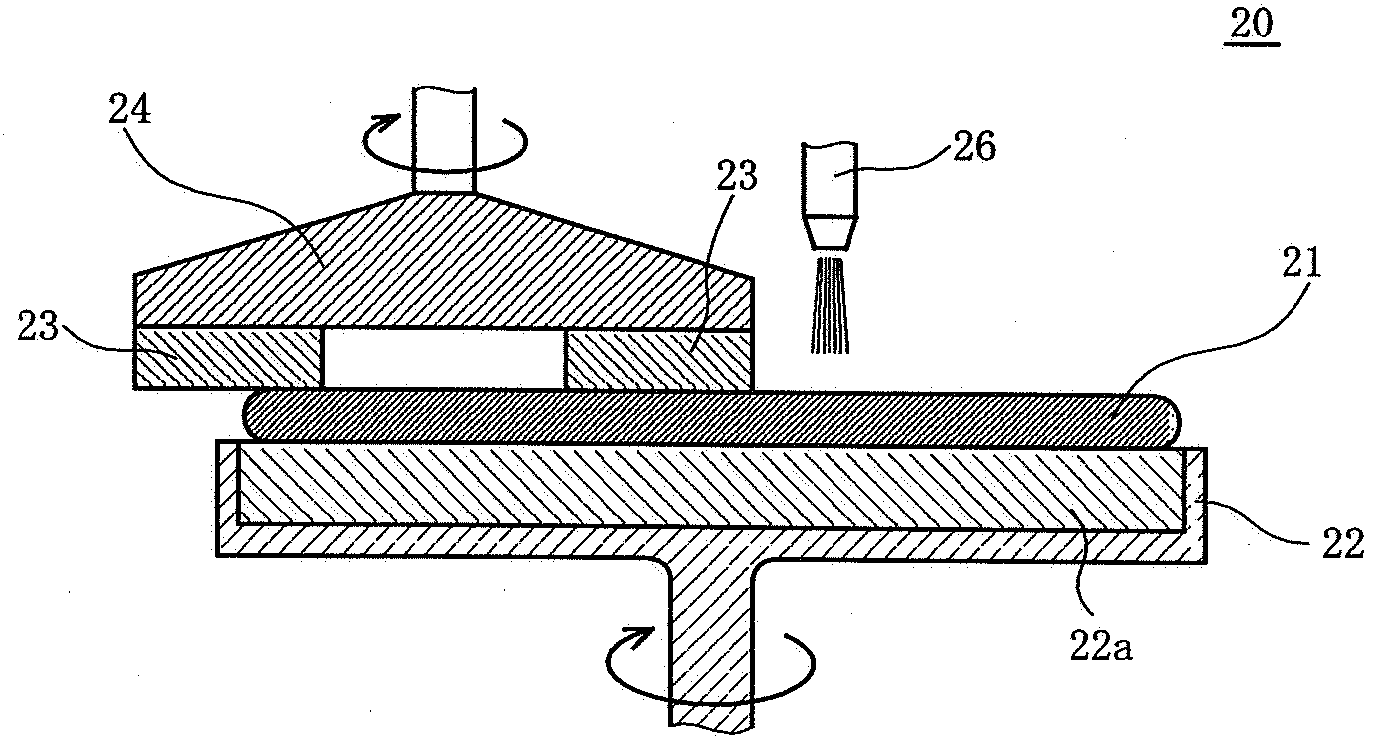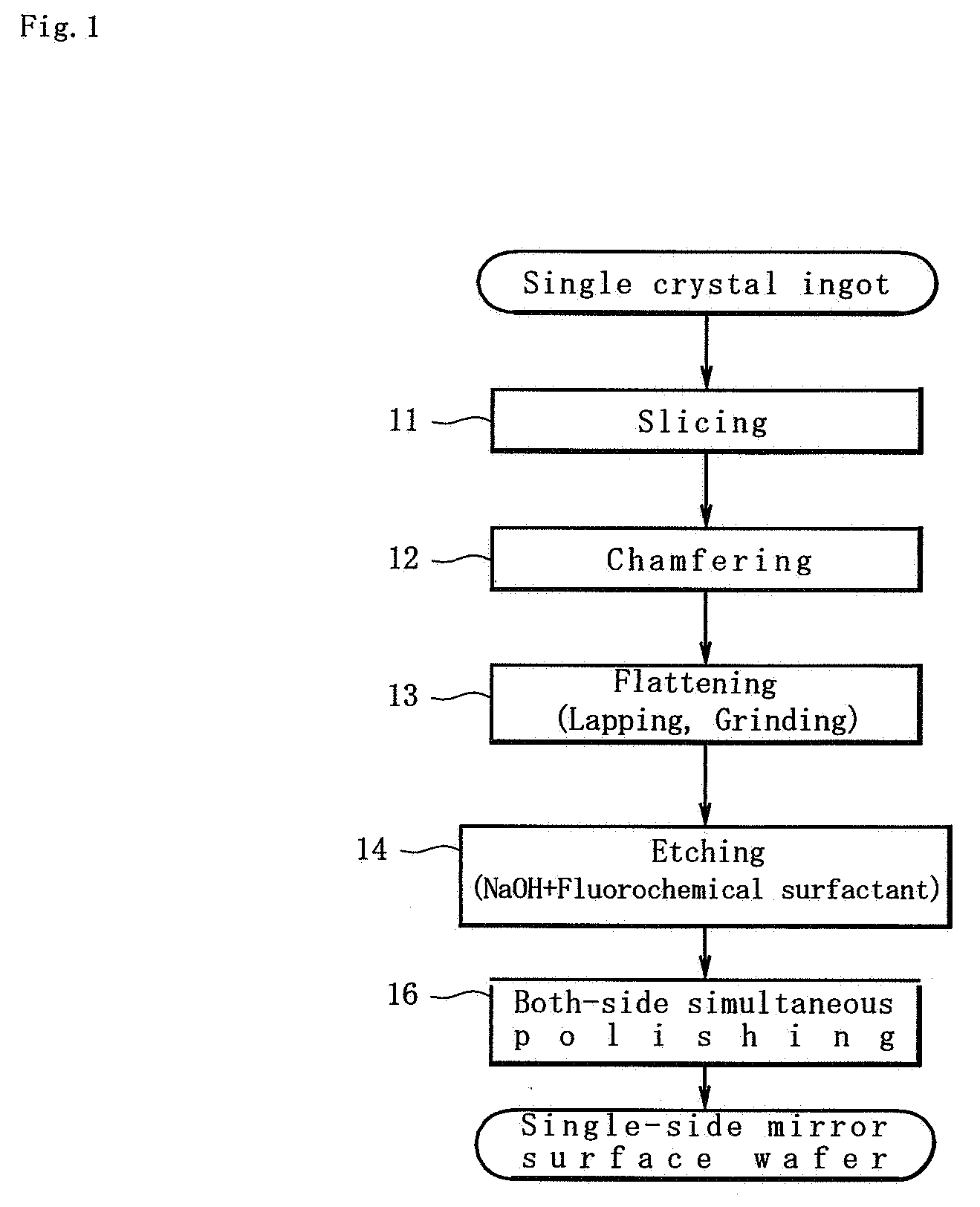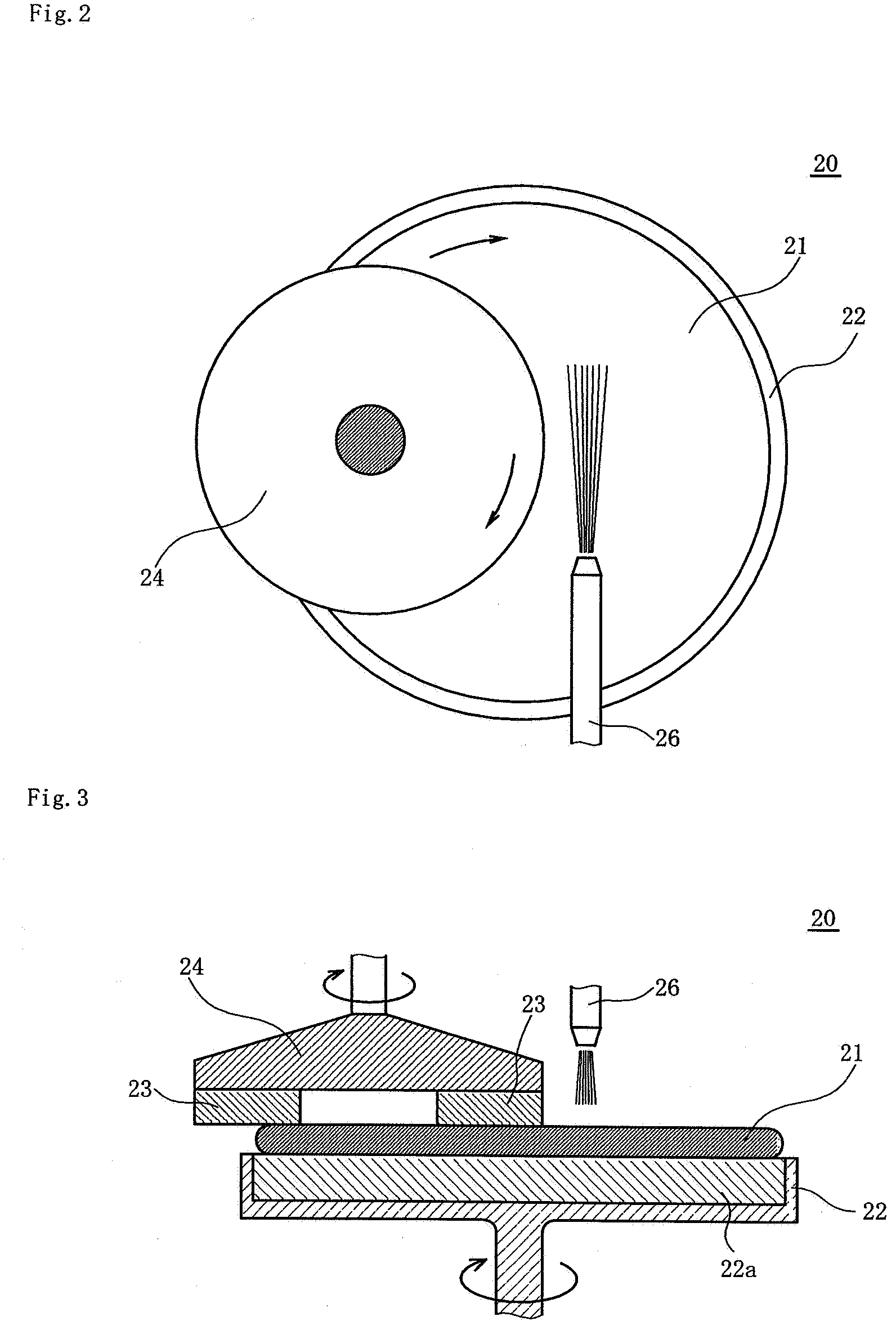Etchant for silicon wafer surface shape control and method for manufacturing silicon wafers using the same
a technology of surface shape and control method, which is applied in the direction of basic electric elements, electrical apparatus, chemistry apparatus and processes, etc., can solve the problems of reducing the mechanical strength of the wafer, adversely affecting the electrical characteristics, and damaged layers, so as to maintain the flat reduce the roughness of the wafer front side, and maintain the flatness
- Summary
- Abstract
- Description
- Claims
- Application Information
AI Technical Summary
Benefits of technology
Problems solved by technology
Method used
Image
Examples
example
[0046]Next, examples of the present invention will be described in detail with comparative examples.
examples 1 through 5
[0047]First, a plurality of silicon wafers of 200 mm diameter are prepared, and the front and back sides of the silicon wafers are subjected to lapping using the lapping apparatus shown in FIG. 4 as the flattening process. An abrasive material including Al2O3 whose count is #1500 is used for the abrasive material in the lapping process, and the silicon wafers are flattened while a flow rate of the abrasive material to be supplied is controlled to be 2.0 L / min, a load of the upper surface table, 70 g / cm2; a rotational frequency of the upper surface table, 10 rpm; and a rotational frequency of the lower surface table, 40 rpm, respectively. Next, as the etching process, the silicon wafers after being flattened are subjected to etching using an etching system shown in FIG. 5. Five types of etchants, in which C8F17SO3K (made by MITSUBISHI MATERIALS CORP., brand name; EFTOP EF-102) as a surfactant is mixed into 50 weight percent sodium hydroxide and prepared so as to be 15 g / L (1:100), 1....
examples 6 through 10
[0048]The flattening process and the etching process are performed in a manner similar to those of the examples 1 through 5 other than replacing the alkaline aqueous solution used for the etchant in the etching process with 40 weight percent aqueous sodium hydroxide solution.
PUM
| Property | Measurement | Unit |
|---|---|---|
| weight percent | aaaaa | aaaaa |
| diameter | aaaaa | aaaaa |
| flow rate | aaaaa | aaaaa |
Abstract
Description
Claims
Application Information
 Login to View More
Login to View More - R&D
- Intellectual Property
- Life Sciences
- Materials
- Tech Scout
- Unparalleled Data Quality
- Higher Quality Content
- 60% Fewer Hallucinations
Browse by: Latest US Patents, China's latest patents, Technical Efficacy Thesaurus, Application Domain, Technology Topic, Popular Technical Reports.
© 2025 PatSnap. All rights reserved.Legal|Privacy policy|Modern Slavery Act Transparency Statement|Sitemap|About US| Contact US: help@patsnap.com



